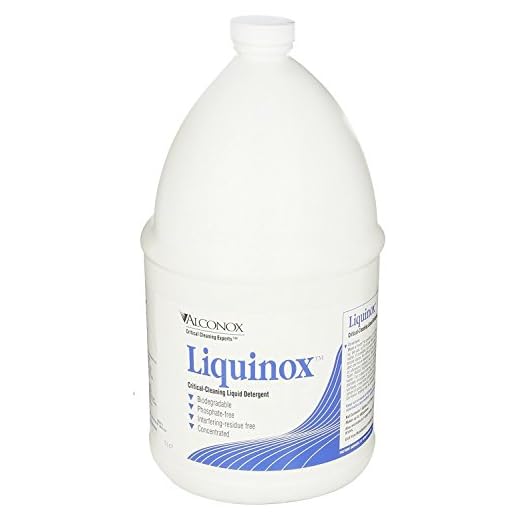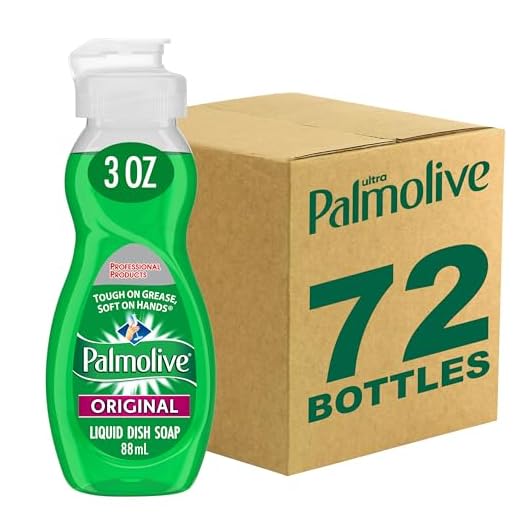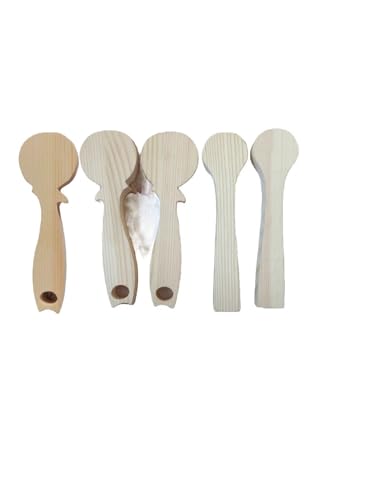




Keeping your powder coat tool box clean not only extends its lifespan, but also ensures that your tools remain in good condition. A clean tool box is not only visually appealing, but also helps you stay organized and efficient in your work. Whether you use your tool box for DIY projects or professional work, regular cleaning is essential.
Step 1: Assessment
Before you begin cleaning your powder coat tool box, assess its condition. Look for any visible dust, dirt, or stains on the surface. This will give you an idea of the cleaning process and products you may need to use. If you notice any rust spots, be sure to address those as well.
Step 2: Gather Your Cleaning Supplies
Next, gather all the necessary cleaning supplies. This may include a mild detergent or soap, a soft sponge or cloth, a scrub brush, water, and a towel or rag for drying. It’s important to choose cleaning products that are safe for use on powder coated surfaces to avoid any damage.
Step 3: Cleaning Process
Start by dipping the sponge or cloth into a solution of water and mild detergent or soap. Gently scrub the surface of the tool box, paying extra attention to any dirt or stains. If needed, use a scrub brush for tougher stains, but be careful not to scrub too hard and damage the powder coat. Rinse the tool box with clean water to remove any excess soap or detergent.
Note: Do not use abrasive cleaners, solvents, or steel wool, as these can damage the powder coat.
Step 4: Drying and Maintenance
After cleaning, use a towel or rag to dry the tool box thoroughly. Make sure to remove any moisture to prevent rusting. Once dry, inspect the tool box for any remaining dirt or stains. If necessary, repeat the cleaning process. Finally, apply a protectant or wax specifically designed for powder coated surfaces to maintain the appearance and protect against future damage.
By following these steps and adopting a regular cleaning routine, you can keep your powder coat tool box looking clean and professional for years to come.
Tips to Clean Your Powder Coat Tool Box
Keeping your powder coat tool box clean is essential for maintaining its appearance and prolonging its lifespan. Here are some tips to help you clean your powder coat tool box effectively:
1. Start by removing any loose debris or dirt from your tool box using a soft brush or cloth. This will help prevent scratching the surface during the cleaning process.
2. Mix a mild detergent with warm water in a bucket or basin. Avoid using harsh chemicals or abrasive cleaners, as they can damage the powder coat finish. Instead, opt for a gentle cleaner that is safe for use on painted surfaces.
3. Dip a sponge or soft cloth into the soapy water and gently scrub the surface of your tool box. Pay special attention to areas with stubborn stains or grease buildup. If necessary, use a non-abrasive brush to tackle more persistent dirt.
4. Rinse the tool box thoroughly with clean water to remove any soap residue. Avoid using high-pressure hoses or power washers, as they can strip away the powder coat finish.
5. Dry the tool box with a soft towel or allow it to air dry completely. This will help prevent water spots or streaks from forming on the surface.
6. For added protection, consider applying a wax or sealant specifically designed for powder coat finishes. This will help enhance the shine and create a barrier against dirt and grime.
7. Regularly clean and inspect your tool box to prevent dirt and debris from accumulating. Wipe down the surface with a soft cloth or sponge as needed.
Remember, proper cleaning and maintenance are key to keeping your powder coat tool box looking its best. By following these tips, you can effectively remove dirt and stains without causing any damage to the finish.
Gather Cleaning Supplies
Before you start cleaning your powder coat tool box, it’s important to gather all the necessary cleaning supplies. Having everything ready beforehand will make the cleaning process much more efficient. Here is a list of supplies you will need:
- Mild detergent or soap
- Soft sponge or cloth
- Bucket
- Warm water
- Microfiber towel
- Non-abrasive cleaner or polish (optional)
Make sure the detergent or soap you choose is mild to avoid damaging the powder coat finish. A soft sponge or cloth will help prevent scratching the surface of the toolbox. Fill a bucket with warm water that is comfortable to touch. You may also want to have a microfiber towel on hand for drying the toolbox after cleaning.
If your powder coat tool box has any stubborn stains or marks, you can consider using a non-abrasive cleaner or polish. However, be cautious and test it on a small, inconspicuous area first to ensure it does not damage the finish.
Remove Surface Dirt and Debris
Before you begin to clean your powder coat tool box, it is important to remove any surface dirt and debris. This will prevent scratches during the cleaning process and ensure a thorough clean.
Step 1: Gather Your Supplies
Start by gathering all the necessary supplies for the cleaning process. You will need a soft-bristle brush, a bucket of warm water, mild soap or detergent, and a microfiber cloth.
Step 2: Brush off Loose Dirt
Using the soft-bristle brush, gently brush off any loose dirt or debris from the surfaces of the tool box. Pay attention to the corners, crevices, and edges where dirt tends to accumulate.
Be careful not to apply too much pressure while brushing, as this could potentially scratch the powder coat finish.
Step 3: Wipe Down with Soapy Water
Fill a bucket with warm water and add a small amount of mild soap or detergent. Use a microfiber cloth soaked in this soapy water to wipe down the entire tool box.
Make sure to wring out the cloth well, so it is damp but not dripping wet. Gently wipe the surfaces, paying attention to any stubborn stains or spots.
Step 4: Rinse and Dry
After wiping down the powder coat tool box, rinse the cloth in clean water and remove any soap residue from the surface. Then, use a dry microfiber cloth to thoroughly dry the tool box.
Make sure the tool box is completely dry before moving on to the next step.
Prepare a Cleaning Solution
Before you start cleaning your powder coat tool box, it’s important to prepare a cleaning solution that will effectively remove dirt and grime without damaging the powder coating.
Here’s how to create a simple cleaning solution:
Materials Needed:
- Warm water
- Mild dish soap or a gentle cleaner
- Soft cloth or sponge
Instructions:
- Fill a basin or bucket with warm water.
- Add a small amount of mild dish soap or a gentle cleaner to the water. Be sure to follow the instructions on the cleaner’s packaging for the correct dilution ratio.
- Gently mix the cleaning solution to create a soapy mixture.
- Dip a soft cloth or sponge into the cleaning solution, making sure it is fully saturated but not dripping.
- Wring out any excess liquid from the cloth or sponge to avoid over-wetting the tool box.
- Begin by wiping down the surface of the powder coat tool box with the damp cloth or sponge. Apply gentle pressure to remove any dirt, dust, or stains.
- For stubborn stains or stuck-on grime, you may need to lightly scrub the area with a soft-bristled brush or toothbrush.
- Rinse the cloth or sponge with clean water regularly to prevent spreading dirt around.
- If necessary, refill the basin or bucket with clean water and rinse the tool box thoroughly to remove any soap residue.
- Finally, dry the surface of the tool box with a clean, dry cloth or allow it to air dry naturally.
By following these steps and using a gentle cleaning solution, you can effectively clean your powder coat tool box without damaging the finish.
Scrub the Tool Box
To clean the powder coat tool box, you’ll need to scrub away any dirt and grime that has accumulated over time. This step-by-step guide will walk you through the process:
1. Gather Your Supplies
Before you begin, make sure you have all the necessary supplies. You’ll need a bucket of warm water, mild dish soap, a soft sponge or cloth, and a non-abrasive scrub brush.
2. Prepare the Cleaning Solution
Fill the bucket with warm water and add a small amount of mild dish soap. Mix the solution until it becomes sudsy.
3. Wet the Sponge or Cloth
Dip the sponge or cloth into the soapy water and wring out any excess liquid. You want the sponge or cloth to be damp but not dripping wet.
4. Scrub Gently
Using the damp sponge or cloth, gently scrub the tool box surface. Start at the top and work your way down, making sure to pay extra attention to any stained or dirty areas. Avoid using excessive force or abrasive materials that could damage the powder coat finish.
5. Use a Scrub Brush for Tough Stains
If you encounter stubborn stains or grime that the sponge or cloth can’t remove, switch to a non-abrasive scrub brush. Apply gentle pressure and scrub in a circular motion until the stains are lifted.
6. Rinse with Clean Water
Once you’ve cleaned the entire tool box, rinse off any soapy residue with clean water. Make sure to remove all traces of soap to prevent streaks or residue from forming on the surface.
7. Dry Thoroughly
After rinsing, use a clean, dry cloth or towel to thoroughly dry the tool box. This will help prevent water spots and keep the powder coat finish looking its best.
By following these steps and taking care not to use harsh chemicals or abrasive tools, you can keep your powder coat tool box looking clean and well-maintained for years to come.
Rinse and Dry
After scrubbing the powder coat tool box with a mild detergent and a soft brush, it’s important to rinse off any soap residue. Use a hose or a bucket of clean water to rinse the entire surface of the toolbox. Make sure to remove all the soap from every nook and cranny to prevent streaks or spots on the powder coat finish.
Once the toolbox has been thoroughly rinsed, it’s time to dry it off. Use a clean, dry microfiber cloth or a soft towel to gently pat the surface dry. Avoid rubbing or scrubbing the toolbox, as this could potentially damage the powder coat finish. Make sure to dry the toolbox completely to prevent water spots or rust from forming.
If there are any stubborn stains or spots that were not removed during the cleaning process, you may need to repeat the cleaning and rinsing steps or use a specialized cleaner for powder coat surfaces. However, be cautious when using any chemicals on the powder coat finish, as they could potentially damage or discolor the surface.
By following these steps and properly rinsing and drying your powder coat tool box, you can keep it looking clean and in pristine condition for years to come.
| Tools and Materials: |
|---|
| – Mild detergent |
| – Soft brush |
| – Hose or clean water |
| – Clean, dry microfiber cloth or soft towel |
| – Specialized cleaner (if necessary) |
Apply a Protective Coating
After cleaning off any dirt or residue from the powder coat tool box, it is recommended to apply a protective coating to keep it looking new and prevent future damage.
There are various protective coating options available, such as wax or sealant, that can be applied to the powder coat surface. These coatings create a barrier between the tool box and any potentially harmful elements.
Before applying the protective coating, make sure the surface is completely clean and dry. This will ensure optimal adhesion and long-lasting protection.
Use a clean microfiber cloth or applicator pad to apply the protective coating evenly on the surface. Work in small sections, making sure to cover all areas of the tool box.
Allow the protective coating to dry completely according to the product instructions. This may take a few hours or overnight, depending on the specific product being used.
Once the protective coating has dried, gently buff the surface with a clean microfiber cloth to bring out a glossy finish and remove any excess product.
Benefits of Applying a Protective Coating:
1. Enhanced Durability: The protective coating adds an extra layer of protection to the powder coat finish, making it more resistant to scratches, fading, and other types of damage.
2. Easier Maintenance: The coating makes it easier to clean the surface, as dirt and grime are less likely to stick to the tool box. Simply wipe it down with a mild detergent and water solution to keep it looking its best.
Tips for Choosing a Protective Coating:
– Look for a coating specifically designed for use on powder coat surfaces.
– Read and follow the manufacturer’s instructions for application and drying times.
– Consider the type of finish you want – matte, glossy, or satin – as different coatings can produce different results.
– If you are unsure about which protective coating to use, consult a professional or the manufacturer of the powder coat tool box for recommendations.
FAQ
What is powder coat tool box?
A powder coat tool box is a metal storage container, typically used by professionals or enthusiasts to store tools and equipment. It is coated with a layer of powdered paint that is baked onto the surface to create a durable and protective finish.
Why should I clean my powder coat tool box?
Regular cleaning of your powder coat tool box is important to maintain its appearance and prolong its lifespan. Over time, dirt, dust, grease, and other contaminants can build up on the surface, affecting the finish and potentially causing damage if left unchecked.
How often should I clean my powder coat tool box?
The frequency of cleaning your powder coat tool box will depend on how often you use it and the conditions it is exposed to. As a general guideline, it is recommended to clean your tool box at least once every few months or as needed to keep it in good condition.
What cleaning supplies do I need to clean a powder coat tool box?
To clean a powder coat tool box, you will need some mild detergent or soap, warm water, a soft cloth or sponge, a non-abrasive scrub brush, and a hose or bucket of water for rinsing. Avoid using harsh chemicals or abrasive cleaners, as they can damage the powder coat finish.
Can I use a pressure washer to clean my powder coat tool box?
While it is possible to use a pressure washer to clean a powder coat tool box, it is not recommended. The high pressure of the water can potentially chip or damage the powder coat finish. It is best to stick to using a hose or bucket of water for rinsing, along with a soft cloth or sponge for cleaning.








